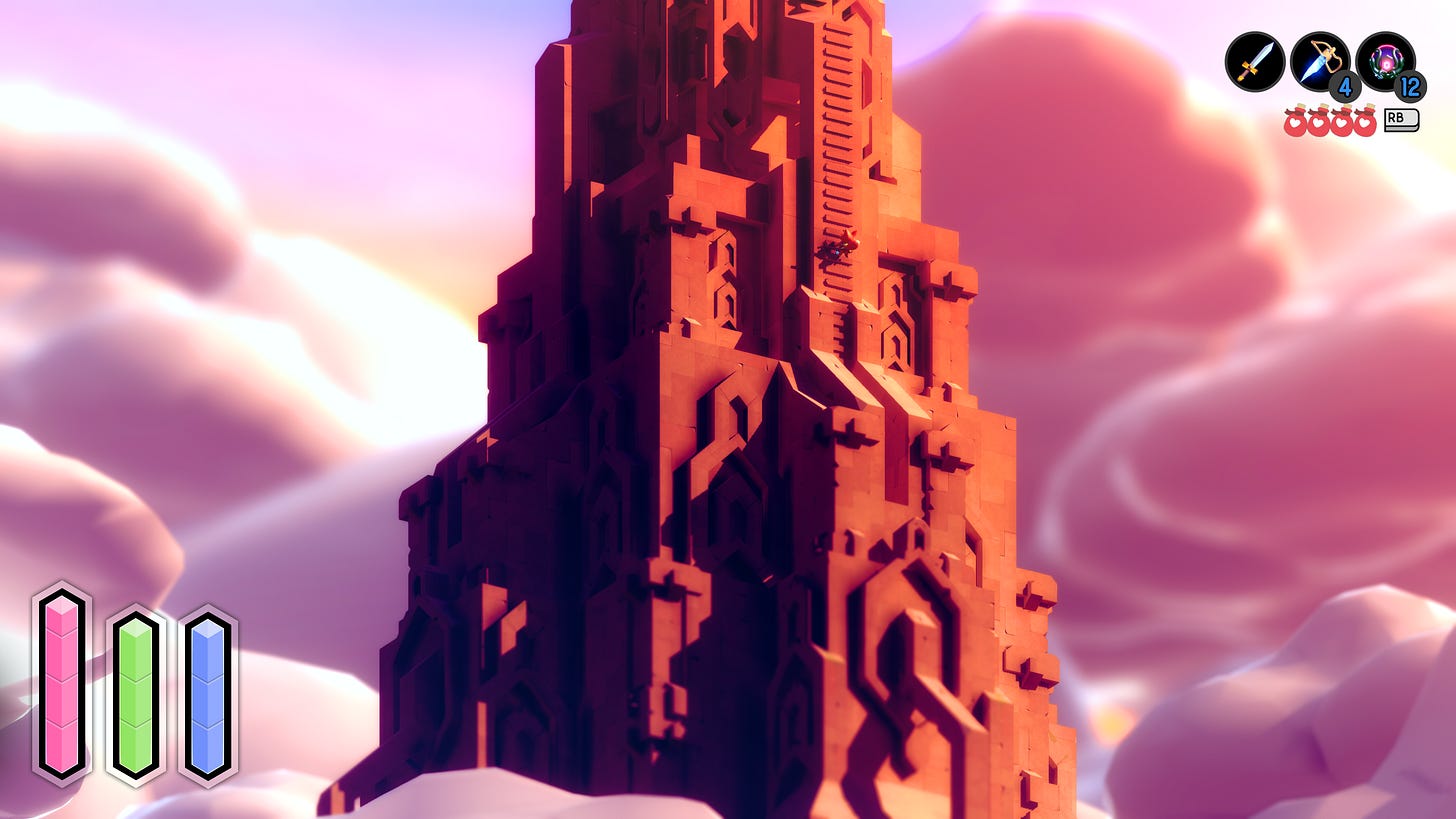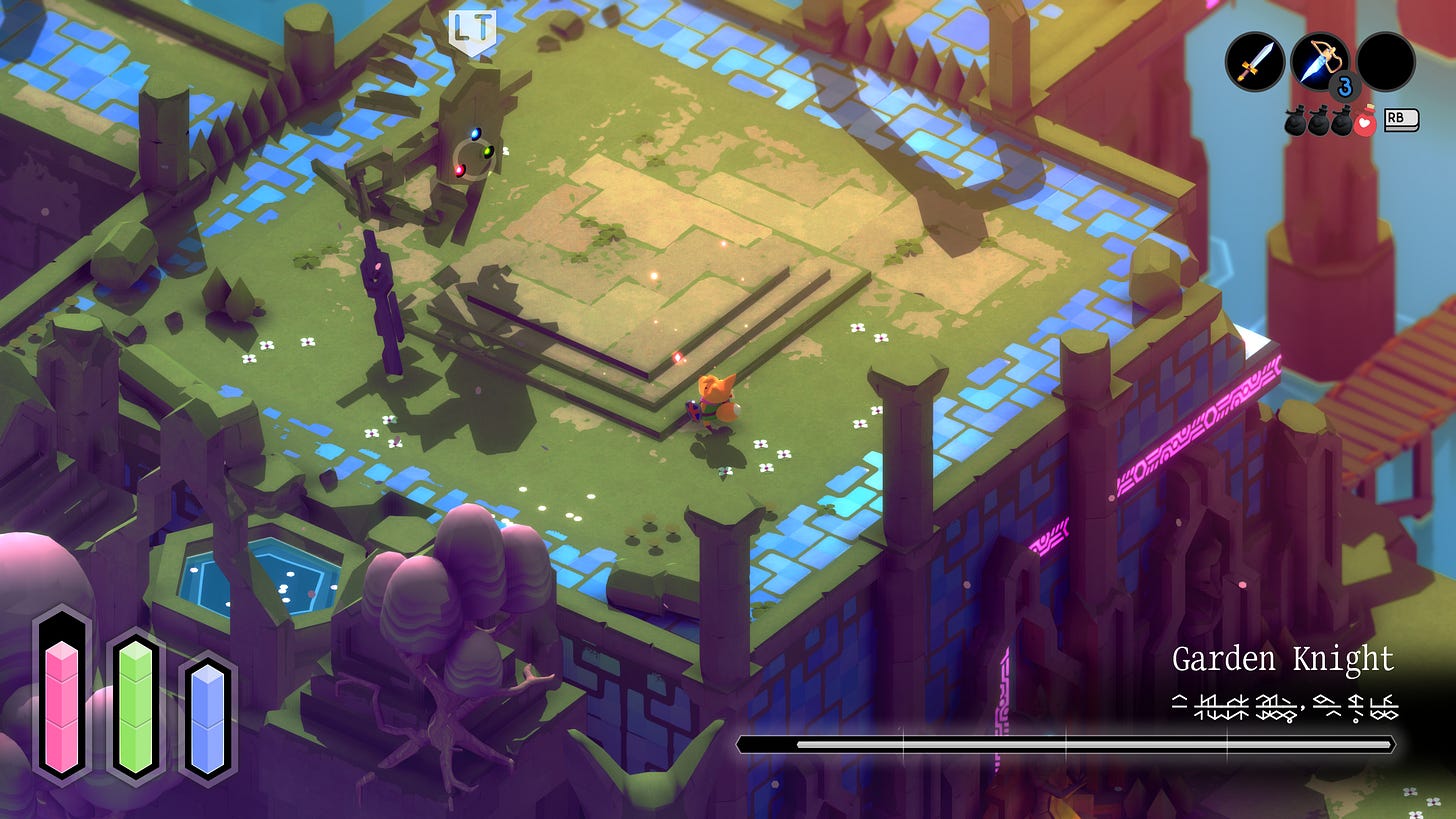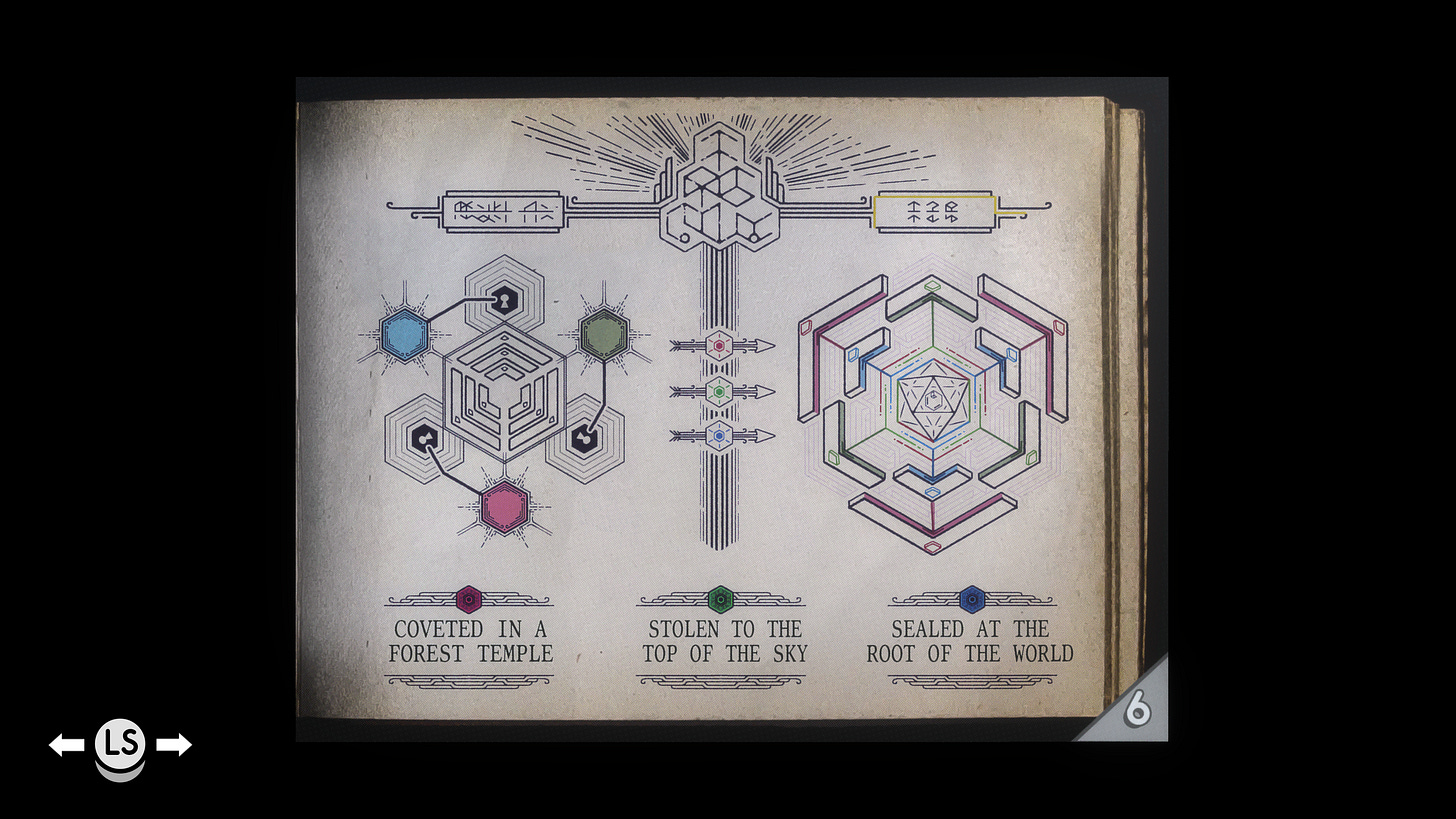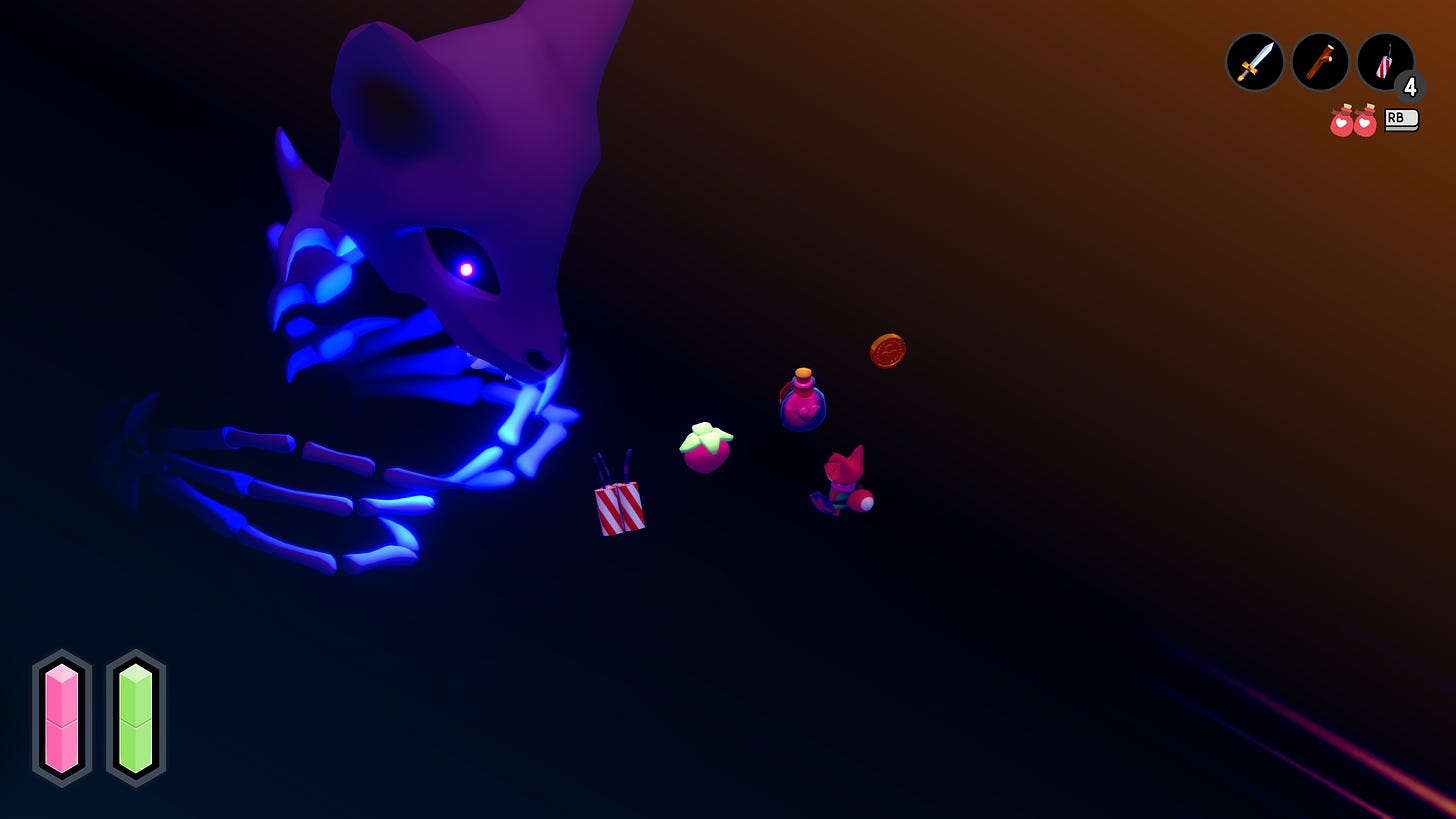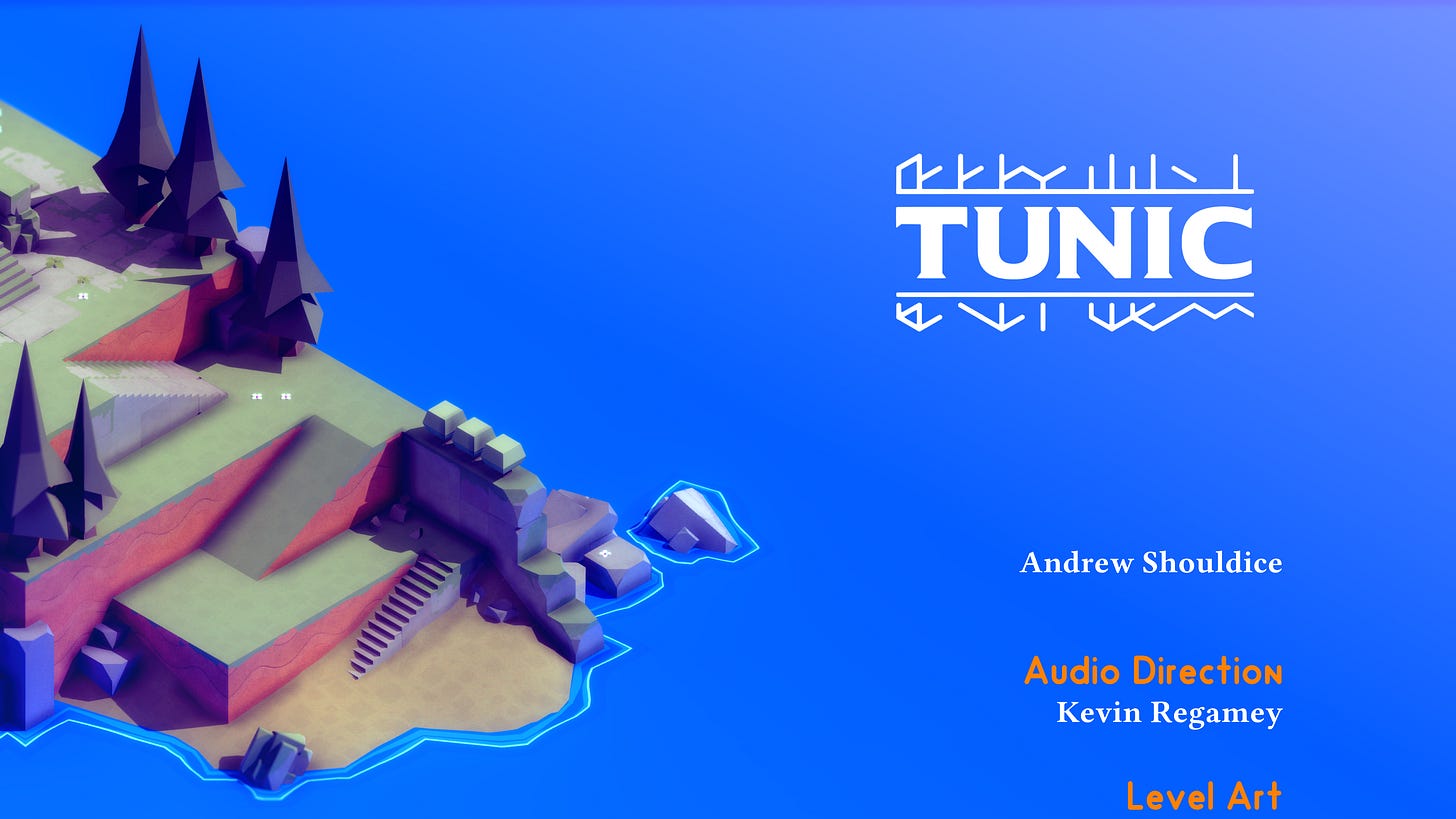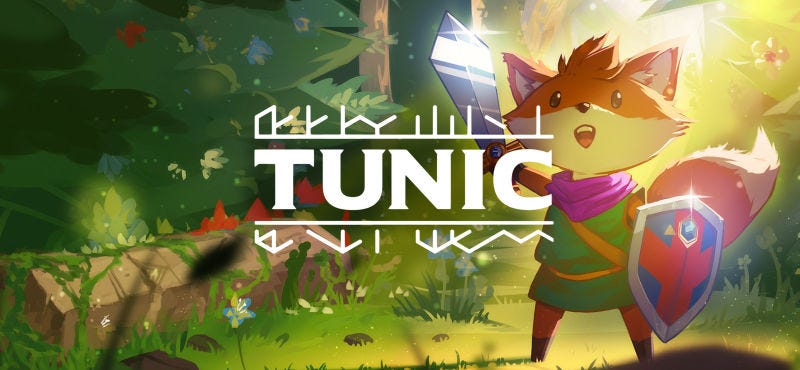Tunic Review
Tunic has some of the best puzzles I've ever come across in a game
Tunic is a prime example of under-promise and over-deliver. A game that, for years, had seemed like it would just be a cute Zelda clone ended up offering an extremely unique and engaging Zelda-inspired adventure. I don’t want to mince words here: Tunic is special, and I highly recommend it to anyone even remotely interested in the classic 3D Zelda-like adventure genre.
If "Lofi Adventure" were a Genre
The first thing you notice after booting the game up is the style. This 3D isometric game wastes no time setting the vibe. The environment, the colors, and the sounds were all very calming for me. I never felt uncomfortable or overly pressured while playing, even in the most intense moments. If I had one word to describe the visual style, I’d say “soft”. The environment almost feels like it was sculpted out of Play-Doh. For me, this brought about a cathartic feeling of interacting with the world. The entire way through the map felt like it strongly encouraged exploration and adventure. It felt mysterious, but it didn’t feel very hostile. Couple this with the music that felt like it was ripped from a lo-fi beats playlist, and you have the perfect atmosphere to get lost in the game.
A Little Too Nostalgic
The gameplay mechanics of Tunic felt very nostalgic, which is both a good and bad thing. Let’s get the bad out of the way first. The mechanics were not very symbiotic, meaning that there wasn’t a great flow between them. I think in any game, it’s important to have that rhythm in combat where you feel like you can go seamlessly from one action to another. In some cases, that’s true, but there is an artificial blocker to this flow. The game only allows you to equip three weapons at a time, but at the end of the game, you can have about 6. Couple that with the fact that you can’t pause the game or slow down time to switch your loadout, and you end up with some awkward combat scenarios. Enemy weakness, or situations, aren’t telegraphed, so you never know what your ideal loadout should be. This means you can often wander into encounters and be ill-equipped to handle the battle. Fortunately, most casual enemies can be dealt with rather easily, and boss fights are coupled with good checkpoints, so this combat balancing isn’t the end of the world, and may only pose an issue in 2 or 3 of the harder fights in the game.
Taking Game Manuals to the Extreme
Otherwise, the gameplay feels great. Tunic does a great job at capturing that retro Zelda feel while adding its own layer of personality on top. Couple this with the insanely clever gameplay manual, and you’ll start to see where the magic of this game lies. The core of the game focuses on the idea that there is an in-game manual that teaches the player important game mechanics. The only issue is that the manual starts with 90% of the pages missing, and almost none of it is in a real language. So you have to not only find the pages scattered throughout the world,but you also have to decipher what the pages are telling you by using the illustrations and information you gather throughout your adventure. The cool thing is that these mechanics are not locked by gameplay progression; they’re available from the very start, they’re just abstracted from the player and activated in non-traditional ways. For example, it took me a couple of hours to learn you could actually level up in the game. It wasn’t until I found and interpreted a specific manual page that I figured out the leveling system.
The Secret Sauce is Secrets
These abstractions are the secret sauce in Tunic. Very early in my journey, I learned that I could leave no stone unturned in this game. Every wall could have a secret door obscured or a chest out of view of the camera. The entire game was built extremely intentionally. Almost everything you come across serves a purpose. I might even go as far as to say that Tunic may have some of my favorite puzzles in any game ever. There are so many things hidden in plain sight that I was left with my mouth wide open at least once in every area I explored. By the time I reached the end of the game, I was legitimately shocked at some of the things I was stumbling upon. By the end, I couldn’t believe how rich and smart this adventure was. It felt like I was sent on the ultimate video game scavenger hunt, all culminating in one grand spectacle of a finale.
Well Worth the Wait
Tunic is special. It’s special because it deliberately presents itself as one thing, and ultimately ends up being something completely different. The story, the gameplay, the world, and even the music are all gripping tightly to their own secrets, which you must pry from them. Once you do, there are very few things in gaming that can replicate the feeling of surprise and accomplishment that this game presents. Out of the hundreds (thousands) of games that release every year, Tunic has earned a spot on a very, very short list of games that provide a unique experience that will withstand the test of time.




